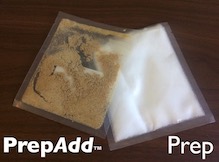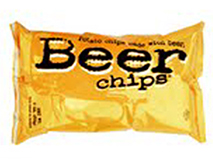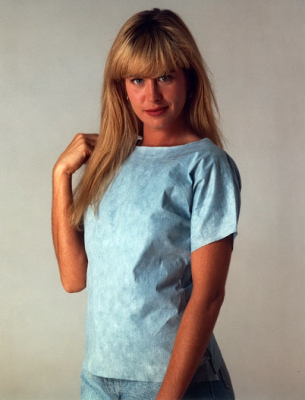|
|
Formafit
Automation for a sustainable apparel manufacturing industry The Formafit process is an automated method for apparel manufacturing. The goal is with the adoption of this process*, it could create decentralized microfactories to facilitate a renaissance for the domestic apparel industry; to produce on demand garments by new-shoring production, reduce lead-times and expand job creation in the manufacturing sector. It will boost the value chain of companies by expanding sell-through, responding quicker to market demands, reduce overall waste, lower total material and energy resource consumption and offer an immediate opportunity to embrace sustainability and labor issues that consumers are demanding. At present, 98+% of apparel that we buy in the US is offshored, with those domestic apparel jobs and skills lost generations ago and not coming back. Once stable, offshore supply chains in the garment manufacturing sector are now being disrupted by trade wars, uncertain and rising tariffs and global pandemics. The Formafit system embraces industry 4.0 factory automation standards to become a smart factory by enabling a connectivity and merging the mechanical with the digital, to produce clothing, a basic element of human life, in an efficient/cost effective way. The uniqueness of the system is that we keep that flexible fabric stationary and move the machinery around, using industry standard automation technologies. It goes from bolt of cloth to a finish garment and applies 3D fabric molding and ultrasonic bonding technologies to simultaneously affect the shape of the garment and the cutting/seaming of materials, all off-the-shelf components**. The process requires the usage of synthetic fibers, such as, polyester, nylon, spandex and polypropylene, can accommodate a variety of knit, woven and non-woven fabrics, all off-the-shelf materials and can readily accept recyclable content in its composition. With the applied technologies, the process has application to manufacture sportswear, athleisurewear, outdoor clothing, military and work uniforms, career apparel, medical grade garments and personal protective clothing. The first generation machine will have the capacity for continual replication of exact copies of designed product that converts 2D fabrics into soft/flexible 3D garments. The Formafit process is flexible in fabricating a variety of types of garments, ranging from loose-fitting styles to highly contoured designs. With this alternative method for manufacturing, it will also establish a novel aesthetic vocabulary for the fashion designer. One that the designer already models in a 3D format on a computer to better fit the human body, as well as, offer increased performance and added comfort. Additionally, with the development of smart fabrics, tending to be synthetic in construction, the process has the potential to produce a whole new class of smart clothing, whose functionality would be technologically restricted and cost prohibitive by using traditional cut and sew methods.
Nylon/Spandex –athletic, athleisure apparel ***
Polyester -military uniforms, career apparel***
Microfactory: need clothing for the New York or Los Angles or Oshkosh markets? Build out a neighborhood microfactory to manufacture only what you need for local distribution and consumption in real time. The process offers transparency and traceability of production, creates local manufacturing jobs, and makes “Made Here” clothing. Won’t need to plan 6-9 months out for offshore production, which ties up capital and offers limited quality control. Macrofactory: scale up and expand the entire process to create a configuration that goes from fiber, to fabric, to finished garment. Incorporate recycled plastics for grinding back into polymer pellets to extrude into fiber, which could then be processed into an assortment of recycled fabrics, which could then be fed directly into the machine, to produce upcycled clothing. Integrate renewable energy resources to allow for the efficient throughput of recycled raw materials to finish garments to create a self-contained facility to manufacture apparel in a truly sustainable format. Minifactory:scale down the process for a storefront retail operation. A consumer could step onto an augmented reality (AR) platform to have their body 3D scanned and with a fashion designers’ input or software suggestions from their phone app, select a garment design, print on-demand graphic patterns on the materials, to create a unique garment in real-time. Partner with sport teams or spin class studios or theme parks or any type of entertainment event and produce branded apparel on premise, on demand, for immediate sales. On demand factory: the process has the ability to fabricate surgical scrubs or disposable medical garments that use synthetic non woven materials. Onsite, at a hospital could be a self-contained on demand factory designed to function well within the facilities limited space and produce a daily allotment of garments per operational schedule. Fastfactory: in an emergency situation, such as, a pandemic or natural disaster, a fastfactory could be quickly inserted into the environment by FEMA or the National Guard for operation in a medical support tent to ramp up quantities to provide medical grade garments and personal protective clothing to assist in meeting the immediate demands. Portafactory:construct a self contained portable system with the ability to deliver by truck, ship or plane and be transported by a governmental agency/NGO to bring to areas for emergency response and production. All of the technologies for these scenarios exist, except on the garment production side. This is what we are proposing. Advantages:
*The process uses fabric molding, ultrasonics and factory automation, similar to the production of N95 masks and PPE medical gowns. **Have proven the technical feasibility of the project with funding from Small Business Innovation Research grants (SBIR):
*** Prototype garments made by simulating the process |














